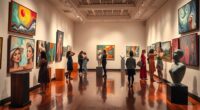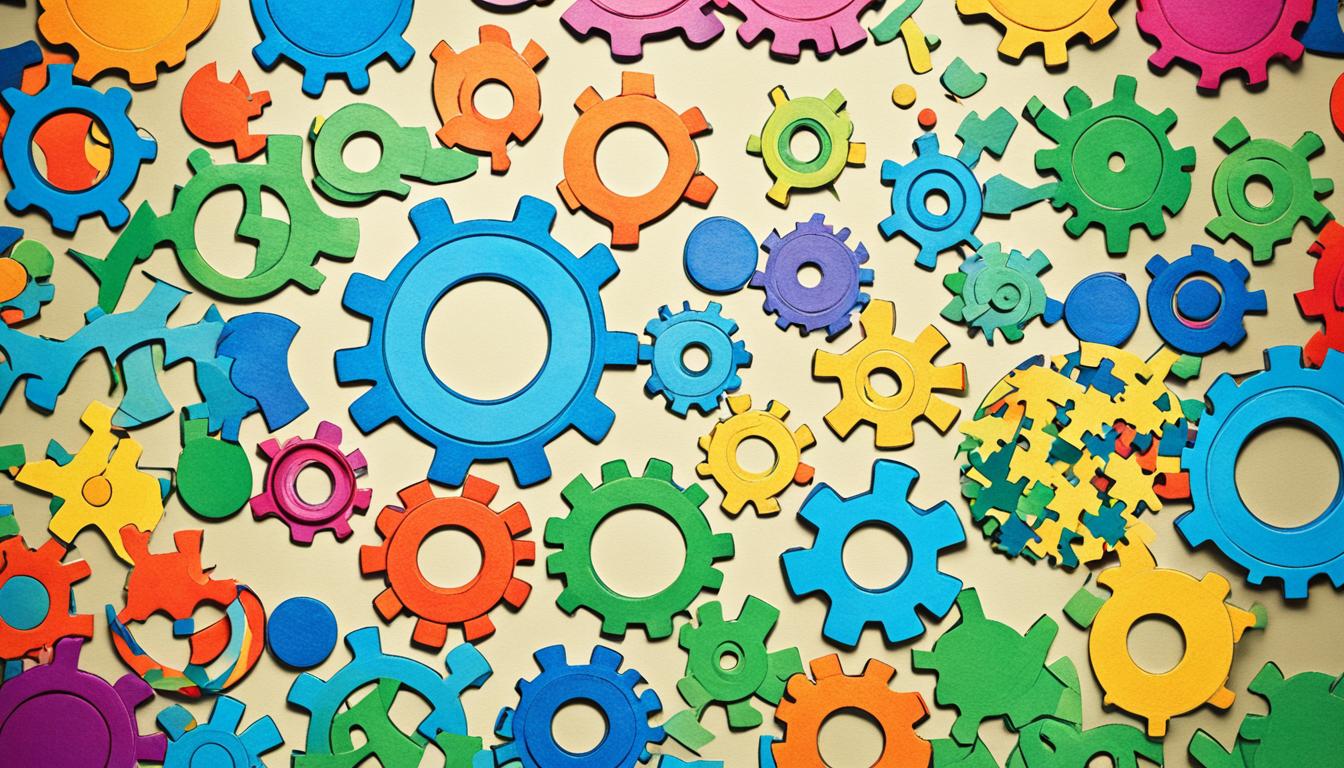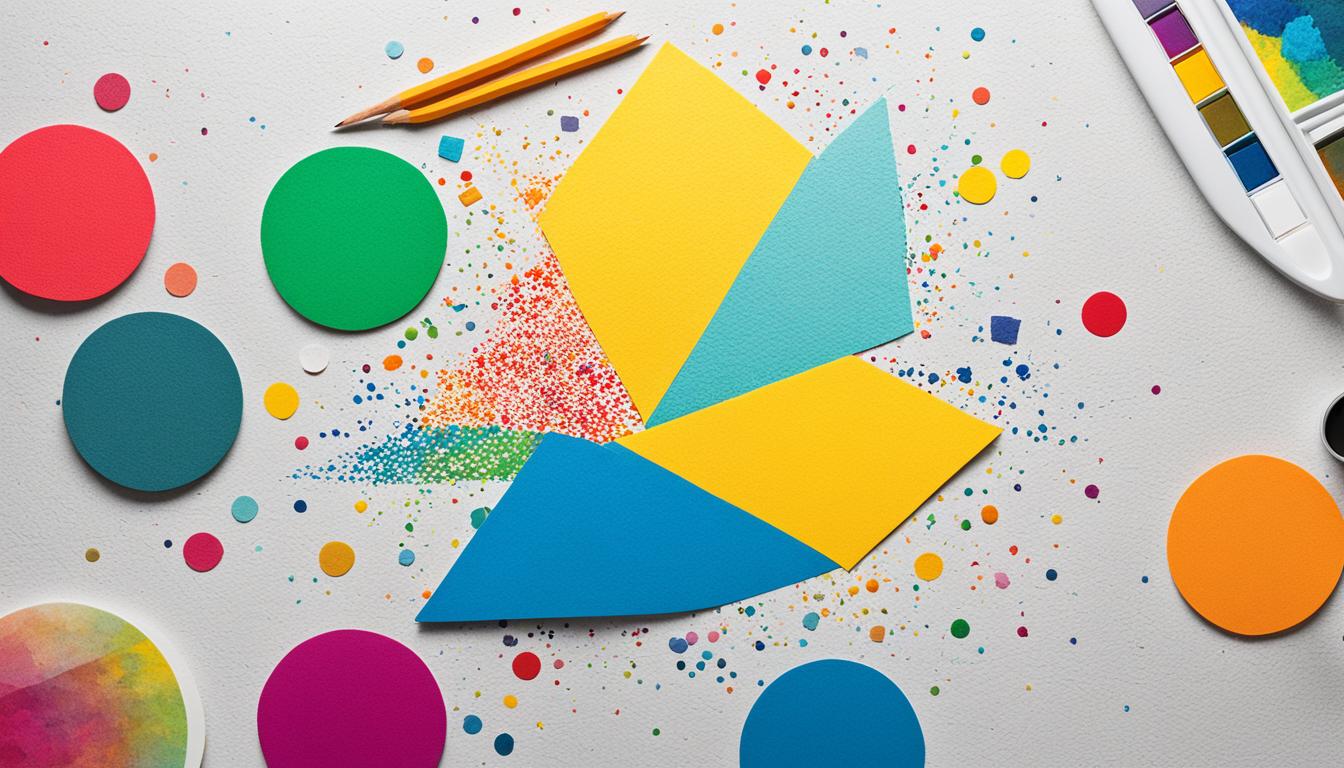Balancing artistic expression with societal boundaries is complex. You must consider that censorship varies by culture, politics, and societal norms, influencing what’s acceptable or offensive. Free speech allows you to share ideas, but moral boundaries and platform rules often restrict certain content to prevent harm. As you explore this topic, you’ll discover how artists challenge norms and how technology impacts censorship, offering insight into steering this delicate line. Continue exploring to understand more about this ongoing dialogue.
Key Takeaways
- Censorship in art reflects societal norms, balancing free expression with moral, cultural, and political boundaries.
- Defining the line involves considering cultural context, intent, and potential impact of artistic content.
- Technology and online platforms complicate censorship, expanding reach but challenging regulation and community standards.
- Artistic defiance can challenge norms and provoke dialogue about morality, censorship, and freedom of speech.
- Ongoing societal debates help refine where the line lies between creative expression and offense.

Have you ever wondered how censorship shapes the way art is created and shared? It’s a complex dance between expressing yourself freely and respecting societal norms. At the heart of this tension lies the concept of free speech—your right to voice your ideas without undue restriction. Yet, even in societies that champion free speech, there are moral boundaries that influence what’s deemed acceptable. These boundaries aren’t set in stone; they evolve over time and differ across cultures. As an artist or viewer, you’re caught in this ongoing negotiation, balancing your desire for open expression with the community’s sense of decency and respect.
When you create or view art, you might ask yourself where the line is drawn. Is it about avoiding offense or protecting societal values? Sometimes, censorship stems from fears that certain works could incite violence, spread hatred, or undermine moral standards. But often, what’s considered offensive is subjective, rooted in cultural, religious, or political beliefs. This subjectivity makes censorship a tricky subject—what one person finds provocative or harmful, another might see as an essential form of free speech or social commentary. This dynamic is further complicated by the influence of content standards, which vary depending on the context and governing bodies. The challenge is to navigate these murky waters without silencing genuine expression.
You might notice that censorship can be both overt and subtle. Governments may ban artworks they find threatening, while institutions or even private individuals might refuse to display certain pieces, citing moral boundaries. Sometimes, artists self-censor, adjusting their work to avoid controversy, which limits authentic expression. Conversely, some push boundaries intentionally, challenging societal norms and sparking conversations about morality, freedom, and the role of art. These acts of defiance can be powerful, forcing society to reconsider the moral boundaries it upholds. Recognizing the cultural context of such works is crucial in understanding their impact and the responses they generate. Additionally, advancements in sound design techniques have enabled creators to craft powerful auditory messages that can influence perception and emotion, adding another layer to discussions about expression and censorship.
Furthermore, the rise of digital platforms has increased the reach of censorship, complicating how art is shared and controlled across borders and cultures.
As you engage with art under censorship, you’re also confronted with the question of who gets to decide what’s acceptable. The line between protecting moral boundaries and suppressing free speech isn’t always clear. It’s a delicate balance—one that requires ongoing dialogue and reflection. Ultimately, censorship impacts not just the art itself but the societal values it reflects and shapes. It influences how freely you can explore difficult topics and how society negotiates its collective moral boundaries. Understanding this tension helps you appreciate the importance of defending free speech while recognizing the need for responsible boundaries that foster a respectful and thoughtful cultural environment.
Frequently Asked Questions
How Do Cultural Differences Influence Censorship Decisions in Art?
You see that cultural perceptions and societal norms shape how censorship decisions are made in art. Different cultures value certain expressions or symbols differently, which influences what gets censored or accepted. You might find that what’s considered provocative in one society is seen as acceptable in another. By understanding these cultural nuances, you realize that censorship isn’t universal but deeply rooted in each society’s unique norms and perceptions.
What Role Does Government Regulation Play in Artistic Censorship?
Did you know that in 2022, over 60 countries implemented strict censorship policies on artistic expression? Government oversight plays a significant role, often shaping what can or cannot be shown or shared. These regulations can limit creativity and free speech, as authorities control content through censorship policies. When governments tighten control, artists may feel restricted, but they also navigate these boundaries to challenge or comply with the rules, shaping cultural narratives.
Can Censorship Ever Enhance Artistic Expression or Understanding?
You might wonder if censorship can ever enhance artistic expression or understanding. While it often limits creative freedom, sometimes it challenges you to think differently or confront uncomfortable truths. Censorship can spark dialogue and reflection, prompting you to explore deeper meanings behind art. However, it’s a delicate balance — too much can stifle creativity, but carefully applied artistic censorship might ultimately deepen your appreciation and understanding of complex issues.
How Do Artists Navigate Censorship While Maintaining Their Message?
You navigate censorship by balancing creative boundaries with your desire for expressive freedom. You adapt your work, finding subtle ways to convey powerful messages without crossing lines that might lead to suppression. By understanding limits and creatively pushing them, you protect your message while respecting societal sensitivities. This approach allows you to communicate effectively, challenge perceptions, and maintain artistic integrity without losing your voice in restrictive environments.
What Are the Legal Consequences of Controversial Art?
The legal consequences of controversial art can hit you like a lightning bolt, causing serious repercussions. You might face hefty censorship penalties, fines, or even criminal charges depending on the content and jurisdiction. Laws vary widely, so the legal ramifications could range from mild warnings to severe punishment, potentially threatening your freedom of expression. Always stay informed about local regulations to avoid unintended legal trouble with your provocative creations.
Conclusion
Ultimately, you must weigh the wonderful and the worrisome ways censorship curtails creativity. While it can protect, it also pests, piercing free expression. Embrace the delicate dance between daring and disapproval, daring to defend art’s freedom without fostering offense. Recognize that true tolerance teaches you to trust your judgment, to find the fine line between freedom and offense. Only then can you truly foster a future where art remains authentic, accessible, and alive.









